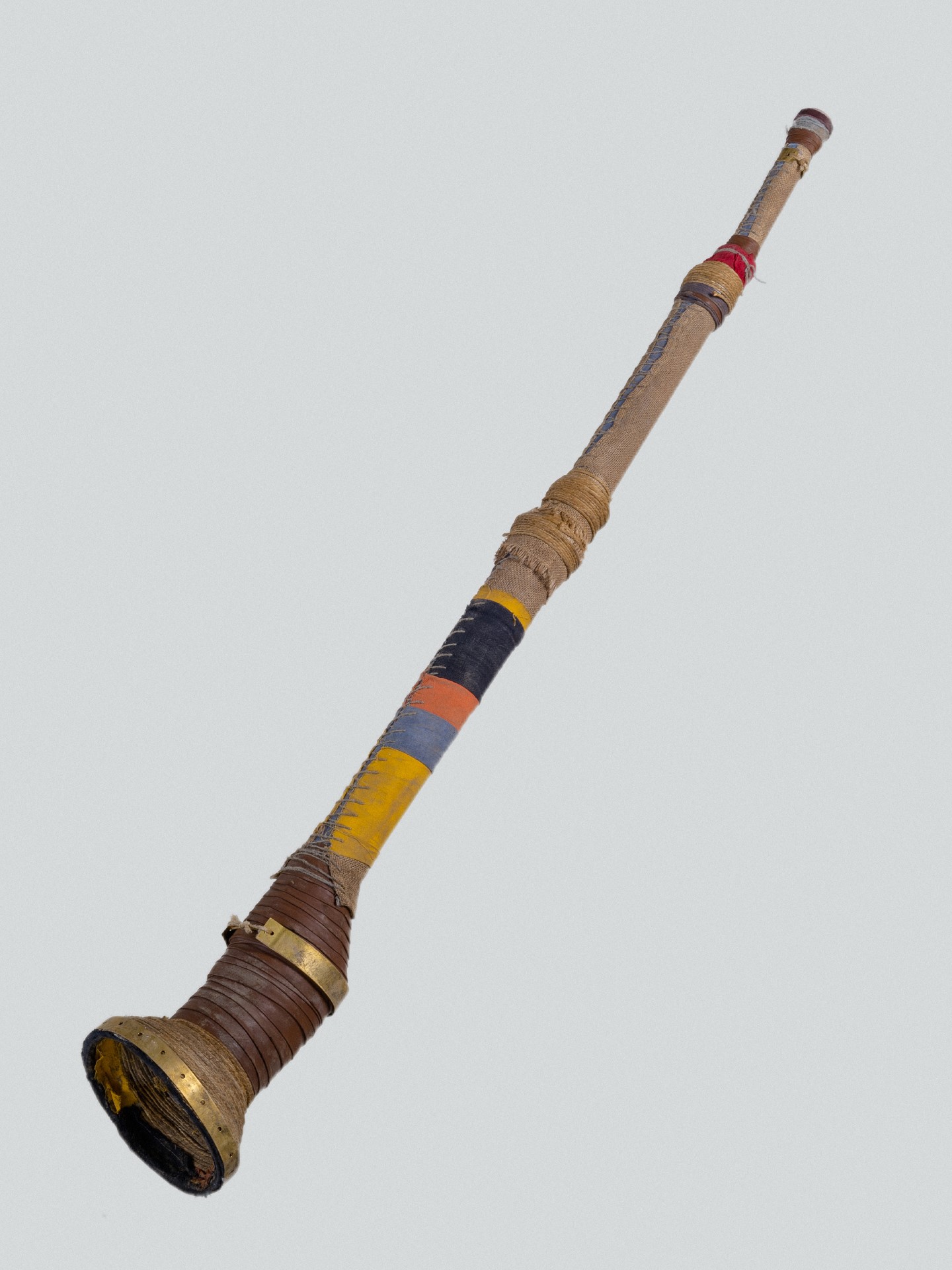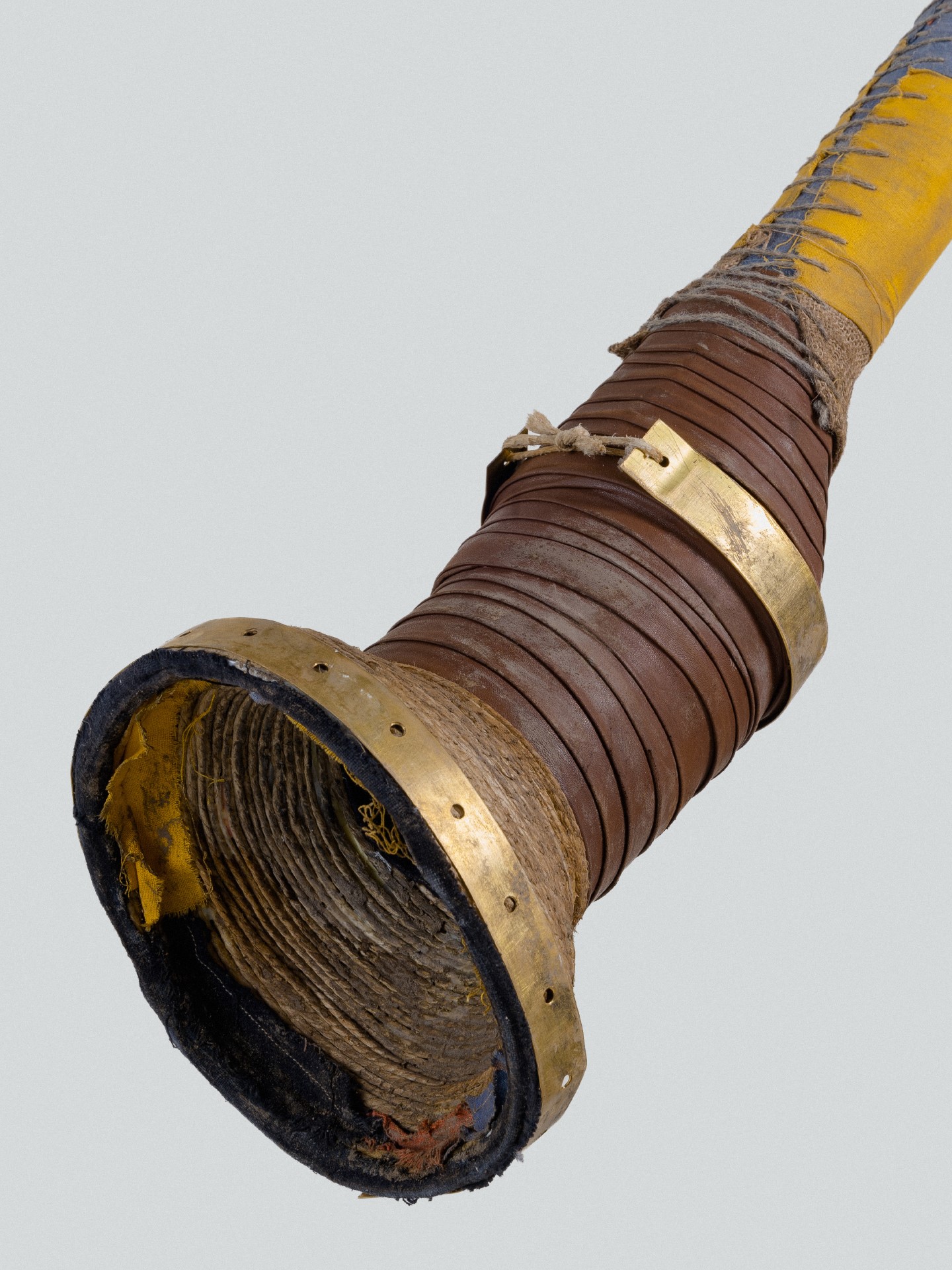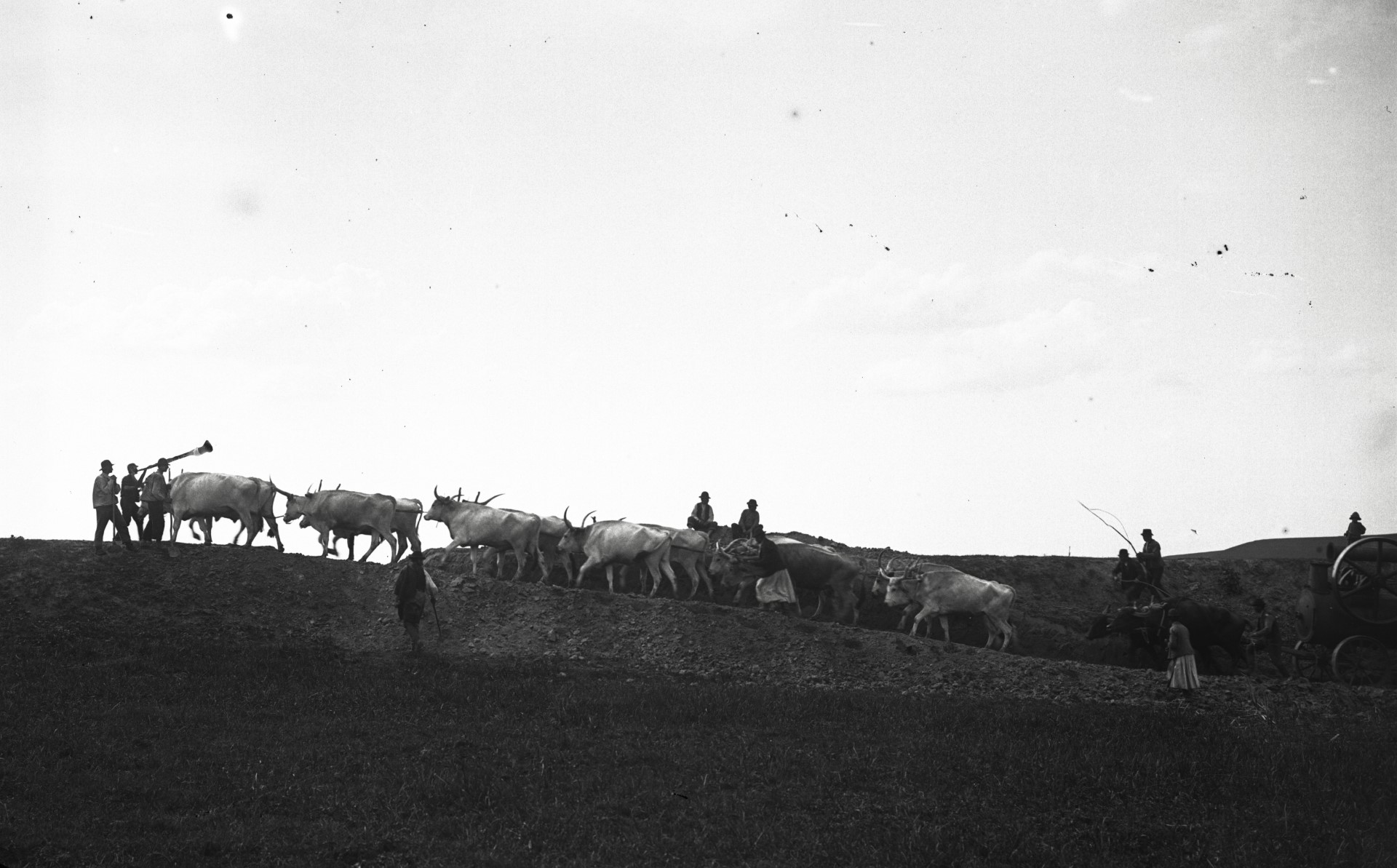The excessive growth of reed near marshes located in the South of the Hungarian Great Plain has been a problem for the past few centuries due to the plant’s capacity to dry out and catch fire very easily. The expansion of reed fields was controlled by the native domestic buffaloes by grazing and by the animals trampling along the site, as the densely overgrown area was inaccessible to humans. Besides their ecological importance, we also have to mention that buffalos are capable of spending 4-5 hours a day laying in the mud. This means that these powerful animals become incredibly stubborn when they get near shallow water. For this reason, a leader is needed who is followed by the other members of the herd (known as the “chidder”). The leader is prepared for this role from an early age. They develop innervations connected to sounds in him, so they can control him from afar, outside the reeds. The leader is scared away and lured somewhere with an ancient wind instrument. At first, only the animal leading the herd was called a “chidder-puller”, later the term spread to the instrument through which the buffalo keepers communicated with the animals and with each other.
The predecessor of the chidder-puller is the Hungarian wooden horn, a 1.5-2 meter long instrument. Based on the shape of the chidder-puller, there have also been assumptions that its other distant relative is the trembita, which was developed for a similar activity. Today's version of the trembita is an instrument also known as the Alpine horn, which was used for communication purposes in the pastures. Unlike the wooden horn, this was not made in rings, but by splitting the trunk of the spruce in two.
In today's context, we can find the chidder-puller in the Hungarian tradition of the “busójárás”, where the busós’ purpose was to go from house to house to express their good wishes and perform their magic, thus banishing winter and bringing warmth – by creating and shouting different sounds. Because of this, the role of the instrument was also endowed with mythical powers, thus becoming a symbolic object in every buffalo-keeper family. Even before the tradition was established, the instruments were only taken out at the end of winter, then in early spring they began clearing the area of reeds so that they would no longer be a potential source of danger by summer.
Az Alföld déli részén jelentett először valós problémát a mocsárközeli nádasok túlzott térnyerése. Az itteni holtágak benádasodása többek között tűzvédelmi szempontból volt aggályos, ugyanis amikor ez a növény kiszáradt, nyáron nagyon könnyen lángra kapott. Terjeszkedésének megfékezését az őshonos házi vízibivalyok látták el, mivel a sűrűn benőtt terület az ember számára megközelíthetetlen volt. A területen való legeléssel, valamint a helyszínen való végigvonulással, annak letaposásával nyitották fel az állatok a nádast. Ilyenkor a leghatékonyabb egy egész nősténycsordát terelni a kiszemelt területre. Ökológiai fontosságuk mellett tudni kell róluk, hogy nagyon emberközeli, szelíd állatokról van szó, akik azonban kepések napi 4-5 órát is dagonyázással tölteni. Ez azt is jelenti, hogy sekély víz láttán a nagytermetű vízibivalyok elképesztően makaccsá válnak. Emiatt van szükség a csordában (régies nevén a cséderben) egy vezetőre, akit követnek az állatok. A kiválasztott egyedet kiskora óta készítik fel erre a szerepre. Hangokhoz kötődő beidegződéseket alakítanak ki nála, így őt messziről, a nádason kívülről is tudják irányítani. A vezérállatot egy zajkeltő eszközzel, a kereplő ősével ijesztik, közben pedig egy ősi fúvós hangszerrel vonzzák valamerre. Eleinte cséderhúzónak csak a csordavezető állatot nevezték, később terjedt át a kifejezés az őt/őket hívogató hangszerre, melyen keresztül az állatokkal és egymással is kommunikáltak a bivalytartók.
A cséderhúzó elődje a magyar fakürt, egy 1,5-2 méter hosszú hangszer, amelyet a székelyek katonai jelzőrendszerként is használtak. A fakürt székely neve a pásztorkürt, melynél a szélesedő, tölcsérszerű üreges fákat gyűrűsen toldották egymáshoz. A cséderhúzó nem csak gyűrűs szerkezetű alakjára alapozva születtek olyan feltételezések is, miszerint a cséderhúzó másik távoli rokona a trembita, melyet hasonló tevékenységre fejlesztettek ki. A trembita mai változata az alpesi kürt néven is ismert hangszer, melyet kommunikációs céllal használtak a legelőkön. Ezt a fakürttel ellentétben nem gyűrűsen, hanem egy lucfenyő törzsének a kettéhasításával készítették el.
Mai vonatkozásban a cséderhúzóval a busójárásban találkozunk. A hagyomány kialakulása akkora tehető vissza, amikor a Mohács-szigeti mocsárvilágba menekült őslakos sokácok, megelégelve a rabigát, ijesztő álarcokba öltözve, maguk készítette hangszerekkel (a cséderhúzóval), zajkeltő eszközökkel (a kereplővel), az éj leple alatt csónakokkal átkelve a Dunán, kizavarták a törököket Mohácsról. A hangszereket már a hagyomány kialakulása előtt is csak tél végén vették elő, és kora tavasszal már neki is kezdtek a térség nádtalanításához, hogy az nyárra már ne legyen veszélyforrás. Ebből alakult ki a busójárás télűző szerepe.
A tülkölő, kereplő, kolompot rázó és „bao-bao!”-t ordítozó busócsoportok célja az volt, hogy házról házra járva kifejezzék jókívánságaikat és elvégezzék varázslataikat, ezzel elűzve a telet, és elhozva a meleget. A hangszer szerepét emiatt mitikus erőkkel is felruházták, így vált egy szimbolikus tárggyá minden vízibivalytartó családban. Érdekessége, hogy nem csak térségenként bukkannak fel eltérő díszítések a hangszerek testén, hanem már családonként is teljesen különböző tárgyakat fedezhetünk fel.


